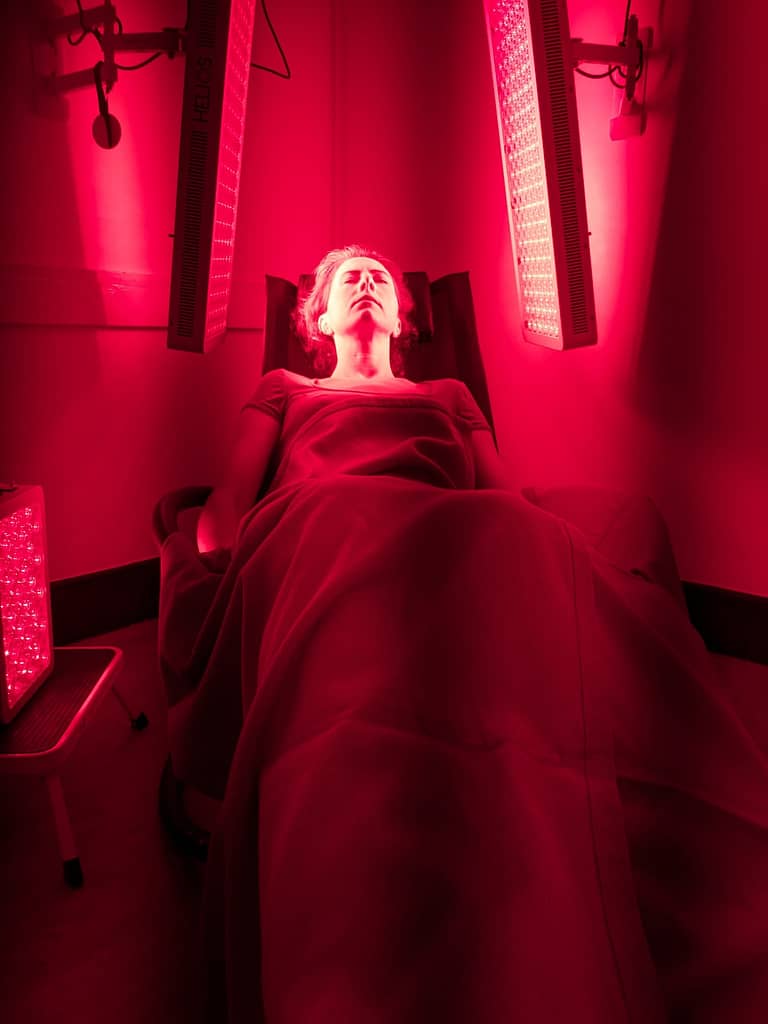Red Light Therapy (RLT), also known as Low-Level Laser Therapy (LLLT) or Photobiomodulation (PBM), is an innovative treatment that uses specific wavelengths of light to interact with tissues and accelerate the healing process.

The Historical Context of Light Therapy
Humans have a long-standing tradition of using sunlight to promote overall health. However, it is only in recent decades that we have begun to understand the specific benefits of different light wavelengths. Red light therapy specifically uses wavelengths between 600 and 700 nanometers (nm), which are believed to penetrate the skin’s surface, stimulating cellular repair and energy production.
The Science Behind Red Light Therapy
The core of red light therapy’s effectiveness lies in its impact on the mitochondria, often called the “powerhouse of the cell.” Mitochondria produce adenosine triphosphate (ATP), the cell’s energy currency. When red light is absorbed by the skin, it is thought to enhance the efficiency of the mitochondrial respiratory chain, subsequently boosting ATP production. This increased ATP availability allows cells to function optimally, improving repair and rejuvenation processes.
Key Benefits of Red Light Therapy
1. Skin Health and Collagen Production:
– Red light therapy has been shown to stimulate collagen production, which is crucial for maintaining skin elasticity and structure.
– It increases fibroblast production, which aids in producing collagen and other essential tissue fibers.
– Enhanced blood circulation to tissues and reduced cellular inflammation are additional benefits, promoting healthier skin.
2. Muscle Recovery and Pain Relief:
– RLT can significantly aid muscle recovery by reducing inflammation and promoting faster healing.
– It is effective in alleviating joint pain, making it a valuable treatment for individuals with chronic pain conditions.
3. Potential Neurological Benefits:
– Emerging research suggests that red light therapy may benefit neurological disorders, although more studies are needed to understand its potential in this area fully.

Clinical Evidence and Future Research
Numerous clinical studies and research have highlighted the potential benefits of red light therapy for various conditions, including skin health, muscle recovery, joint pain, and neurological disorders. However, while the evidence is promising, further research is necessary to comprehend its benefits and determine the most effective applications.
Summary
Red light therapy presents a promising frontier in medical treatment, leveraging specific wavelengths of light to enhance cellular function and promote healing. Whether you’re seeking relief from chronic pain, improved skin health, or faster muscle recovery, red light therapy offers a non-invasive and scientifically supported option. As research continues to unfold, this therapy holds the potential to revolutionise our approach to health and wellness. Always consult with healthcare professionals before starting any new treatment to ensure it aligns with your health needs.
Explore the potential of red light therapy and discover how this innovative treatment can enhance your quality of life.